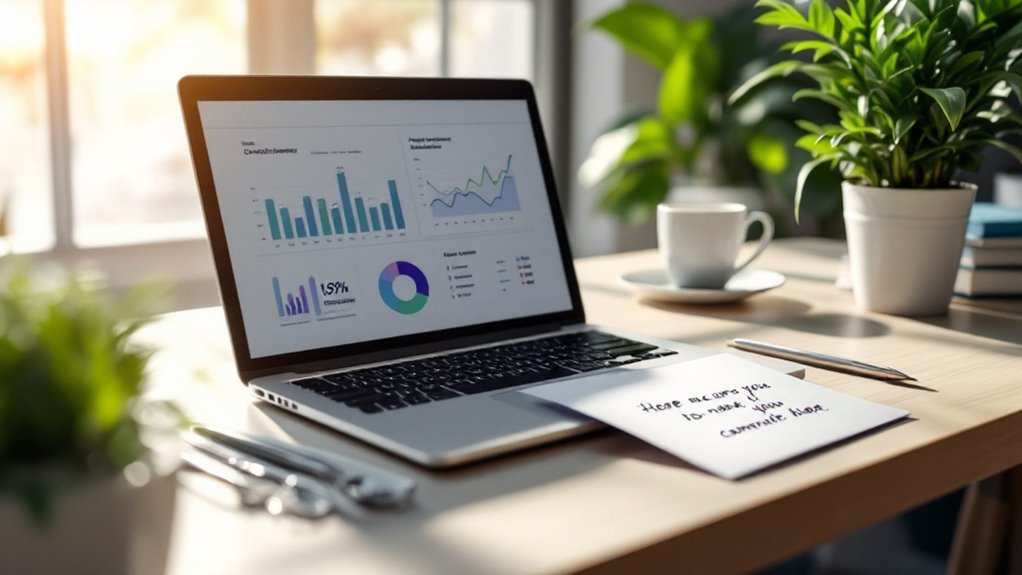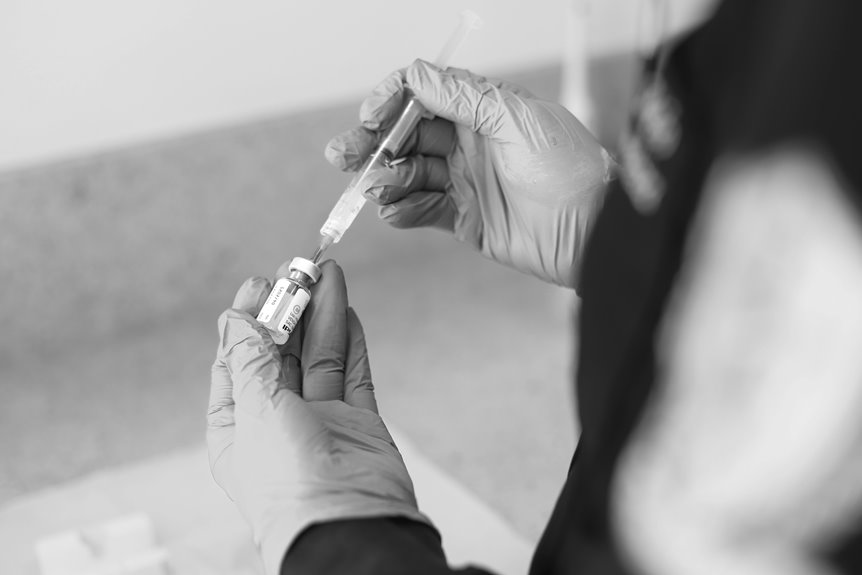When Dr. Smith donated $10,000 worth of dental equipment to a local clinic, he not only supported his community but also revealed substantial tax benefits. You might be wondering how you can similarly enhance your charitable contributions while optimizing your tax strategy. From cash donations to donor-advised funds, there are numerous avenues available that can maximize your deductions. However, understanding the nuances and requirements can be vital to ensuring you reap the full rewards without running into pitfalls. Let's examine how you can strategically navigate these options.
Key Takeaways
- Bunching charitable donations in a single tax year can maximize deductions and exceed standard deduction thresholds for higher tax benefits.
- Donating long-term appreciated assets allows for full fair market value deductions while avoiding capital gains taxes.
- Utilize donor-advised funds for immediate tax deductions and tax-free growth on contributions, enhancing your philanthropic impact.
- Maintain thorough records, including receipts and valuations, to ensure compliance and maximize potential tax benefits from your charitable contributions.
- Consult with tax professionals regularly to stay informed about changing tax laws and optimize your charitable giving strategy.
Benefits of Charitable Contributions
When you make charitable contributions, you not only support causes you care about but also access significant tax benefits for your dental practice.
These contributions can reduce your taxable income, allowing you to deduct cash donations up to 60% of your adjusted gross income. If you donate long-term appreciated assets, like stocks, you can claim a full fair market value deduction while avoiding capital gains taxes.
Strategic giving, such as using donor-advised funds, provides immediate tax deductions, enabling you to spread out contributions over time. Additionally, naming charities in your estate plan can minimize estate tax burdens.
Maximizing Tax Deductions
To maximize your tax deductions, consider bunching your charitable donations into one tax year; this can help you exceed the standard deduction and maximize your itemized deductions.
Utilizing donor-advised funds also offers significant benefits, allowing you to make immediate contributions while enjoying tax-free growth on those funds.
Bunching Donations Strategy
Bunching donations can be a smart strategy for maximizing your tax deductions, especially if you're looking to lower your taxable income in high-income years.
By grouping several years' worth of charitable contributions into a single tax year, you can exceed the standard deduction of $13,850 for singles or $27,700 for married couples, thereby boosting your itemized deductions.
This approach not only enhances your tax savings but also allows you to donate appreciated assets, avoiding capital gains tax while claiming their full fair market value as a deduction.
Utilizing donor-advised funds can further optimize this strategy, enabling you to make a significant contribution one year and distribute the funds to charities over time, maximizing both your tax benefits and charitable impact.
Donor-Advised Funds Benefits
While many dentists are aware of the benefits of charitable giving, donor-advised funds (DAFs) offer a unique opportunity to maximize tax deductions effectively.
With DAFs, you can receive an immediate tax deduction for your contributions, potentially avoiding capital gains taxes by donating long-term appreciated assets. This strategy not only allows you to claim itemized deductions but also enhances your overall tax benefits.
By bunching multiple years of charitable contributions into one year, you can exceed standard deduction thresholds, increasing your tax savings. Plus, DAFs give you the flexibility to decide when to contribute, ensuring you make financial advantages work in your favor while supporting your philanthropic giving over time.
Adopt this tax strategy for greater impact!
Types of Qualifying Donations
Understanding the various types of qualifying donations can greatly enhance your tax strategy as a dentist. You can claim tax deductions for cash donations to 501(c)(3) charities, allowing up to 60% of your adjusted gross income (AGI).
If you donate long-term appreciated assets, like stocks or real estate, you can deduct their fair market value, up to 30% of your AGI, avoiding capital gains taxes. Contributions to donor-advised funds provide immediate tax deductions while letting you decide when to distribute to charities.
Don't forget about non-cash donations, such as dental supplies, which can also qualify. Just make sure you meet IRS documentation requirements and itemize your deductions to maximize your charitable contributions for tax benefits.
Record Keeping for Donations
To maximize your tax benefits from charitable donations, accurate record keeping is vital. Start by tracking all your charitable contributions throughout the year. This includes documenting cash donations, which can be deducted up to 60% of your adjusted gross income.
For non-cash contributions, keep appraisals for items valued over $500 to meet IRS requirements. Remember, compliance is key; organize your donations by type and retain records for at least three years after filing your tax return. This timeframe is essential, as it's when the IRS can audit your claims.
Utilizing tax savings calculators can also help you estimate potential tax benefits, ensuring you don't miss out on valuable tax deductions associated with your generous giving.
Donor-Advised Funds Explained

Charitable giving can take many forms, and one effective strategy for dentists is utilizing donor-advised funds (DAFs). These funds allow you to make charitable contributions and receive an immediate tax deduction, maximizing your tax benefits, especially in high-income years.
With DAFs, your contributions grow tax-free, enabling larger charitable distributions in the future. Fidelity Charitable, a leading DAF provider, showcased the impact of these funds by distributing $11.8 billion to charities in 2023, highlighting their role in philanthropy.
You can also engage in strategic giving by bunching contributions from multiple years, helping you exceed standard deduction thresholds. This approach not only enhances your charitable impact but also leverages important tax advantages for your financial planning.
Timing Your Contributions
When you time your charitable contributions wisely, you can greatly enhance your tax benefits. By making year-end donations before December 31st, you can secure immediate tax deductions for that year.
If you expect a higher income, consider bunching multiple years of donations into one. This strategy can considerably lower your taxable income, allowing you to maximize itemized deductions.
Additionally, donating appreciated assets, like stocks, in years with anticipated capital gains lets you avoid those taxes while benefiting from a fair-market value deduction.
Finally, if you foresee a dip in income, donate now while you're in a higher tax bracket to leverage larger deductions. Timing is key to optimizing your charitable contributions and maximizing your tax benefits.
Working With Tax Professionals

Working with tax professionals can make a significant difference in your financial strategy as a dentist.
They'll help you identify valuable deductions and plan your charitable contributions strategically, ensuring you maximize your tax benefits.
Identifying Valuable Deductions
Many dentists overlook valuable deductions that can greatly lower their taxable income, especially when they collaborate with tax professionals.
By understanding tax deductions related to charitable contributions, you can reduce taxable income markedly, potentially up to 60% of your adjusted gross income.
Tax professionals can guide you in donating long-term appreciated assets, allowing you to avoid capital gains tax while claiming full fair market value deductions.
Proactive tax planning enables you to bundle multiple years of donations, maximizing tax benefits during high-income years.
Accurate documentation is essential, so keep receipts and appraisals for non-cash donations organized.
Regular consultations with tax experts guarantee you stay informed about changing tax laws, helping you maximize the advantages of your charitable giving strategies.
Strategic Contribution Planning
Understanding the potential of charitable contributions sets the stage for strategic planning with tax professionals. By consulting them, you can identify tax strategies that align with your financial goals while maximizing deductions.
For instance, consider donating appreciated assets to sidestep capital gains tax. Additionally, strategic planning allows you to "bunch" multiple years of donations in one year, helping you exceed the standard deduction.
Tax professionals can also guide you on using donor-advised funds, which offer immediate tax benefits and allow you to distribute funds over time. Engaging in proactive communication keeps you updated on changing tax laws, enhancing your tax planning, while meticulously documenting contributions guarantees compliance and substantiates your deductions.
Frequently Asked Questions
How Do I Avoid Paying Taxes if I Donate to Charity?
To avoid taxes when donating, leverage itemized deductions and adhere to IRS guidelines. Consider non-cash donations to qualified charities, utilize donor-advised funds, and stay within donation limits for ideal tax credits and deductions through strategic tax planning.
Can You Write off a Dentist on Taxes?
Think of tax benefits as a garden you cultivate. You can write off dentist deductions like business expenses and charitable contributions, following IRS guidelines, to maximize itemized deductions and stay within donation limits for nonprofit organizations.
How Do I Maximize Charitable Donations on My Taxes?
To maximize charitable donations on your taxes, consider donation limits, utilize charity tax deductions, and focus on non-cash contributions. Implement tax planning strategies, maintain financial recordkeeping, and explore charitable remainder trusts for ideal itemized deductions.
Is It Worth It to Claim Charitable Donations on Taxes?
Claiming charitable donations on your taxes is like planting seeds for a better community. You'll enjoy tax benefits, maximize deductions, and strengthen non-profit partnerships, enhancing your financial planning while supporting impactful charitable giving and dental philanthropy.
Conclusion
Incorporating charitable contributions into your dental practice isn't just about giving; it's a strategic way to enhance your financial landscape. Think of it as planting seeds—each donation can bloom into significant tax benefits while nurturing your community. By understanding the ins and outs of deductions, record-keeping, and donor-advised funds, you can cultivate a thriving practice that reaps rewards for both you and those you serve. Team up with tax professionals, and watch your impact grow.


